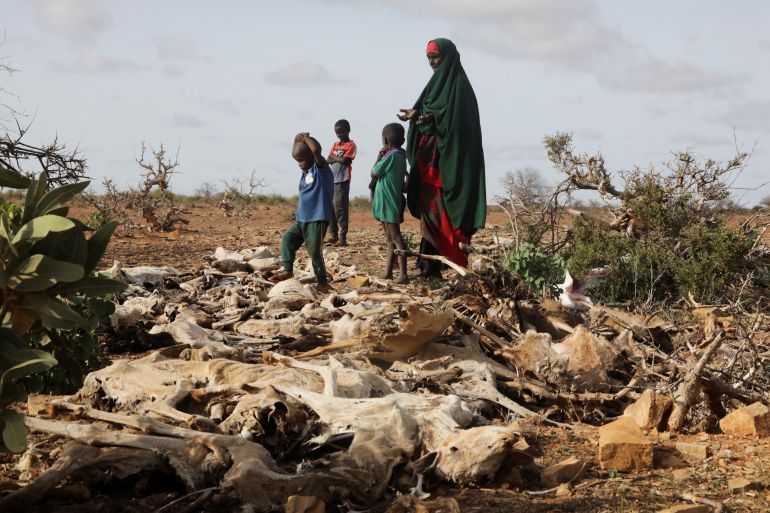Drought in Horn of Africa worse than in 2011 famine
Below-normal rainfall is expected during the rainy season over the next three months in parts of Somalia, Kenya and Ethiopia, a climate research centre says.

Drought trends in the Horn of Africa are now worse than they were during the 2011 famine in which hundreds of thousands of people died.
The IGAD Climate Prediction and Applications Center said on Wednesday that below-normal rainfall is expected during the rainy season over the next three months.
Keep reading
list of 4 itemsWill California’s extreme storms offset its years-long drought?
‘Hungry for days’: Drought’s cruel toll on pregnant Somali women
Photos: Lagoon dries up as Peru’s southern Andes faces drought
“In parts of Ethiopia, Kenya, Somalia, and Uganda that have been most affected by the recent drought, this could be the 6th failed consecutive rainfall season,” it said.
Drier than normal conditions have also increased in parts of Burundi, eastern Tanzania, Rwanda and western South Sudan, the centre added.
While famine thresholds have not been reached, UN Secretary-General Antonio Guterres said on Wednesday that 8.3 million people – more than half Somalia’s population – will need humanitarian assistance this year.
Workneh Gebeyehu, the head of IGAD, urged governments and partners to act “before it’s too late”.
The drought, the longest on record in Somalia, has lasted almost three years and tens of thousands of people have died.
Last month, the UN resident coordinator for Somalia warned excess deaths in the country will “almost certainly” surpass those of the famine declared in the country in 2011, when more than 260,000 people died of starvation.

Ongoing hunger crisis
About 1.3 million people, 80 percent women and children, have been internally displaced in Somalia by the drought sweeping the Horn of Africa. After five consecutive poor rainy seasons, the ongoing drought has already become the longest and most severe in Somalia’s recent history.
Close to 23 million people are thought to be highly food insecure in Somalia, Ethiopia and Kenya, according to a food security working group chaired by the UN Food and Agriculture Organization and the regional Intergovernmental Authority on Development.
Already 11 million livestock that are essential to many families’ health and wealth have died, Wednesday’s statement said. Many people affected across the region are pastoralists or farmers who have watched crops wither and water sources run dry.
The war in Ukraine has affected the humanitarian response, as traditional donors in Europe divert funding for the crisis closer to home.
“These prolonged and recurrent climate change-induced droughts will further worsen other existing, mutually exacerbating humanitarian challenges in the region, including the ongoing hunger crisis, the impacts of COVID-19, and internal displacement.
“We need an all-hands-on-deck approach to strengthen food systems, livelihoods, and climate resilience,” said Mohammed Mukhier, the International Federation of Red Cross and Red Crescent Societies director for Africa.